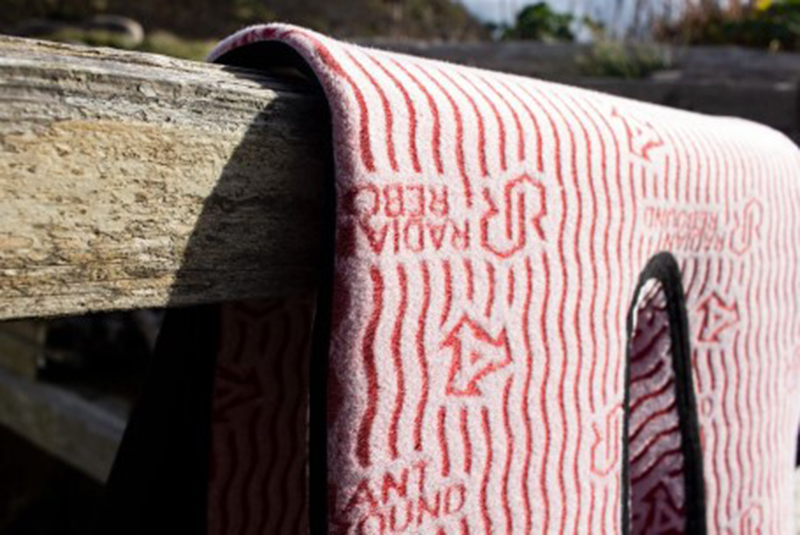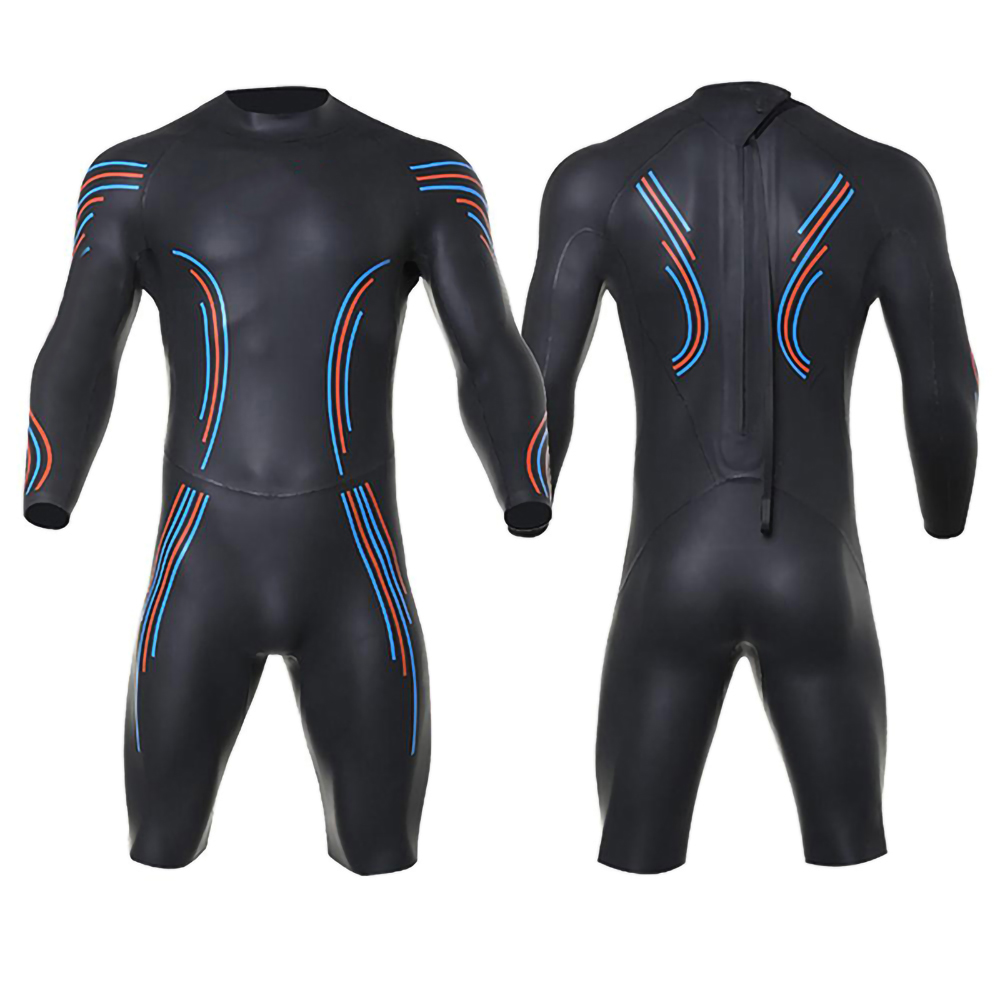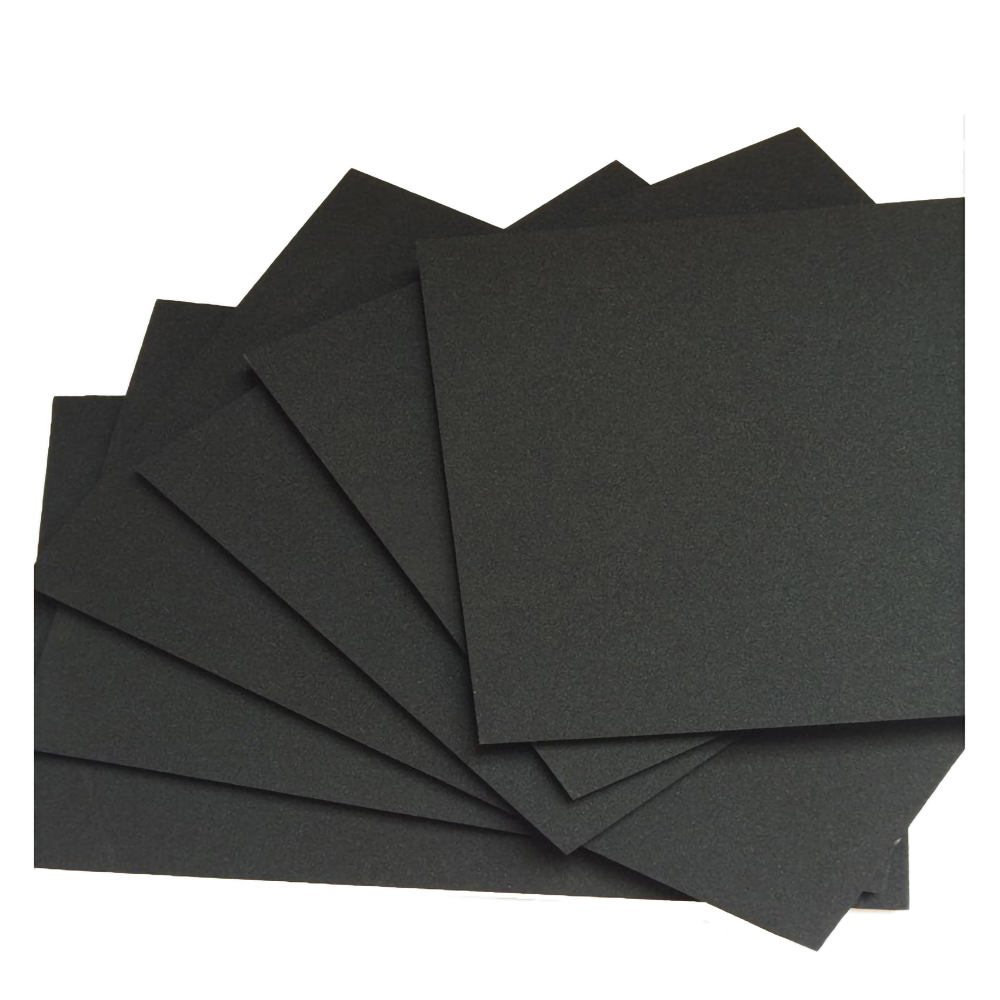Wetsuit material - Thermal lining of wetsuits
The lining is the insulating layer on the inside of the wetsuit and is mainly used for medium and high-grade wetsuits. The lining material should be stretchy and lightweight, and be water repellent and quick-drying so it doesn't become a heavy, wet fleece after wearing.
When it's cold, the thermal lining will keep you warm. However, even though these materials have become lighter and more flexible, they still reduce the flexibility of the wetsuit.
If you do need a wetsuit with a thermal lining, the area covered by each wetsuit will vary. Generally, the more you're willing to pay, the more coverage you'll get. Some wetsuits are not lining at all, such as entry-level or summer suits, but some wetsuits will have full lining (1), some just the legs and torso (2), some may only have a panel on the front (3) to better protect the core area.
Wetsuit material - What is the difference between Spandex, Lycra and Elastane?
In our wetsuit material, are spandex, lycra and elastane all the same?
The material itself is elastane, but different names are used depending on the country and the brand that makes it.
For example, people living in the US usually refer to elastane as spandex, but the rest of the world calls it elastane unless they're referring to a specific brand name. E.g. Lycra is DuPont's product for spandex fibers. Lycra® is a trademark and brand name of DuPont Company. There are other companies that also produce spandex fibers, such as Elastam, Elaspan, Creora or Dorlastan, and so on.
So, no matter what it's called, elastane is still elastane.
Wetsuit material - What is smooth skin neoprene
Smooth skin neoprene: one side is the cell, the other side is the surface of the sponge sheet, The smooth skin is in the outside and has excellent strength and smoothness, but the stretchy performance is not as good as the neoprene cell. Because of being good at repelling water and the wind.
In general, "Smooth Skin" neoprene is used for core region of the wetsuit to prevent the wind and water from cutting through and it is to manufacture the triathlon wetsuit. However, it is not as durable as the neoprene with nylon line, and it is much more easily to tear and rip when we wearing.
Wetsuit material - Yamamoto neoprene introduction
1) science and technology fabric from the essence of breakthrough
triathlon wetsuit technology is mainly manifested in glue and tailoring and edition type, and the content of science and technology mainly comes from the use of materials, almost top of the world triathlon brand invariably chose Japanese Yamamoto company of neoprene as production triathlon wetsuit materials necessary。
2) low resistance performance
the technical coating of Yamamoto SCS makes the resistance coefficient of the material in water 0.021, while the resistance coefficient of the generic brand of neoprene is 4, which is an order of magnitude difference.
3) tensile capacity
the average tensile capacity of the Yamamoto neoprene is 7 times that of the ordinary neoprene stretching ability, which affects the fit and comfort of the players in their clothing buoyancy performance.
4) buoyancy performance
the average buoyancy of Yamamoto neoprene is 30% higher than the average brand. buoyancy can have a big impact on the speed of a player and it floats more smoothly in water, you can swim faster and more effortless.
Wetsuit material - What is limestone neoprene
It was Yamamoto Corporation from Osaka, Japan that first developed neoprene from limestone—and with no oil at all—thanks to an abundance of pure limestone close by in the mountains of Japan (their reserve of limestone is estimated to be sufficient for the next 3,000 years). Yamamoto has set the standard for quality and innovation in the neoprene industry with their advanced manufacturing techniques, leading to the creation of a limestone neoprene that has a completely independent cell structure and multi-directional stretch capacity.
The calcium carbonate, found in the limestone, is used as the base with chloroprene by a process of polymerization to produce limestone based-chloroprene rubber chips.
What are the advantages of limestone neoprene?
Limestone neoprene has a high micro-cell structure. These are independent closed cells (bubbles basically) within the neoprene that are packed together at an extremely high density. Oil-based neoprene has a cell penetration of 60-70%, whereas limestone neoprene has a 94% cell penetration. What this means in simple terms is that limestone neoprene has a lot more air bubbles inside the rubber than other brands (over 30% to be exact), and is way less dense than oil-based neoprene.
Because of this micro-cell structure, limestone neoprene provides several serious distinct advantages to the functionality of wetsuits compared to the traditional oil-based neoprene:
It is impermeable.
It is lighter in weight.
It is warmer.
It is more durable.
It is stretchy.
Wetsuit material - What is neoprene types
There are several different grade Neoprene materials for different application: SBR, CR and SCR.
| Name | Features | Neoprene Composition | Application |
| SBR | A synthetic rubber produced by polymerization of styrene and butadiene. It has excellent cushioning and warmth retention, low price but poor compression resistance. | Styrene Butadiene Rubber | Wetsuit, bags, gloves, covers, koozie, mouse mat, etc. |
| CR | A synthetic rubber produced by polymerization of chloroprene. It has excellent elasticity, strength, pressure resistance and warmth retention, seawater resistance, chemical resistance and flame retardancy. | Pure Neoprene. Chloroprene Rubber | High-end wetsuits and clothes. |
| SCR | A mixture of CR and SBR and is widely used in the production of various related products as lower price than CR and better elasticity than SBR. | Mix of CR & SBR | Gloves, pants, wetsuits. etc. |
For the difference between the high-end material ( CR ) and the basic material is elasticity. High-end material is softer, more resilient, and fits even better after wearing, and keep the body warmer. Basic materials does not stretch as CR and more fragile.
In addition, the high-end material is more expensive. The price of "CR" + "Super Stretch fabric" 5-6 times that of "SBR" + "Nylon fabric" in general, although their surfaces are similar. Some of rubber companies such as Sheico and Nam Liong developed high-end SCR that has good function. It is not as good as CR but price is low.
Wetsuit material - What is neoprene
The completed chemical name of this material is actually called polychloroprene. DuPont renamed to neoprene when choosing a trade name for the material and the name stuck. Nowadays, all polychloroprene materials are simply referred to be as neoprene.
What is it? It is an elastic synthetic rubber material that has very good insulating properties due to the millions of tiny air bubbles (microcells) inside the material. These cells are filled with air or nitrogen (better insulators). So that they make up the basic insulation of neoprene to keep warm inside. This is why the wetsuits are also made of this material.
Devote to
diving equipment
one-stop customization
12 years experience
Best Sellers
Experience in Water
Guarantee on Wetop
Tel.: +86 592 6536 876
E-mail: enquiry@wetopsports.com
Copyright © Xiamen Wetop Sports Co., Ltd. All Rights Reserved | Sitemap
Quick Links
Company

Dear Friend
Thank you for your enquiry. We are looking forward to be your fantastic partner soon.
Due to different email systems, If you don't receive our email in the next 2 working days after submitting,
1) Pls kindly search the spam box in your email first,
2) If also not, Pls kindly let me know by leaving message here again, sending email or other contact info. Such as FB, linkedin.
Page automatically Jump waiting time : 30
Enquiry info sending...